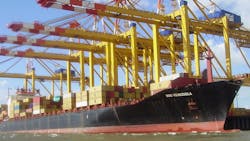Ocean Freight Rates -- Set by a Legal Cartel?
How is a basic ocean freight rate arrived at by carriers and what informs the surcharges added to freight rates?
EXPERT ANSWER:Corporate and M&A attorney
Graham & Penman LLP
There is a two part answer to this question.
First, on a micro level, the 15-16 major players that control 90% of ocean freight (i.e., the supply), get together for a monthly meeting with TSA – the Transpacific Stabilization Agreement, a research and discussion forum of major ocean container shipping lines. This “legal cartel” provides a forum wherein the shipping lines talk about rates and space. While they technically can’t set pricing, they do discuss rates with an attorney present. Rates are computed by calculating slot costs per month, costs to maintain a vessel per day, fuel costs, and port charges on each side. Ultimately, they all agree on a rate level. Then, once they all walk out, they start to undercut each other’s rates.
Second, on a macro level, the answer all comes back to supply and demand. At the end of the day, customer demands take over. Currently, there is a huge overcapacity. Thus, extra supply means rates go down.
Regarding surcharges, they are mostly fixed costs that don’t fluctuate wildly. For example, the Panama and Suez canals have surcharges. There are GRIs (general rate increases) which are announced monthly, and peak season surcharges which can add $400 - $500 per 40 foot container; however, again, the market takes over, and supply and demand ultimately dictates price.
To me, the most fascinating aspect regarding ocean freight is that major players who control 90% of the supply are (i) allowed to get together and discuss rates, but (ii) cannot really do anything to drive up the revenue. If they were able to raise rates by $100 per container and, for example, 10 million containers enter the United States, that’s an additional $1 billion dollars in revenue that can be captured. However, given the economics of supply and demand, consumers of imported goods shouldn’t worry about rising costs and logistics professionals shouldn’t worry about decreasing margins until, of course, the next TSA meeting.

